-
Notifications
You must be signed in to change notification settings - Fork 1
Path Delay
The Path Delay plug-in (present in release 1.13 and later) makes it easy to quickly determine the path delay of a DUT. For most analog electronics, this is of little interest. But for DUTs that involve digital signal processing, this becomes increasingly important.
The path delay is determined with a very short singe-cycle burst of a sine wave. The parameters for the plug-in are shown below:
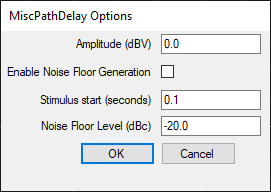
The Amplitude specifies the amplitude of the burst. If you Enable Noise Floor Generation, then a background noise will be present throughout the non-burst portion. This can be useful if you need to open a noise gate on a DUT.
The Stimulus Start allows you to set the location of the single-cycle burst in the frame. If you are not generating background noise, then it makes sense to leave it at the default settings of 0.1 seconds. The overall frame is about 1.3 seconds (and the maximum delay you can measure is about 1.2 seconds), so if you set the burst to occur at 1 second, then the maximum delay you can detect is 0.2 seconds.
Finally, you can specify the noise floor level, relative to the amplitude. That is, if you have specified a 0 dBV signal amplitude and a -10 dBc noise floor level, the noise will be roughly 300 mV or so. To minimize errors, you should specify just enough noise level to open the gate on the DUT you want to test.
For the demonstration, let's first setup a 250 mS delay. This is done in Cakewalk, which is a Digital Audio Workstation. For this test, we use a delay VST, with the delay value set to 250 mS and the signal mixing set to 100% wet:
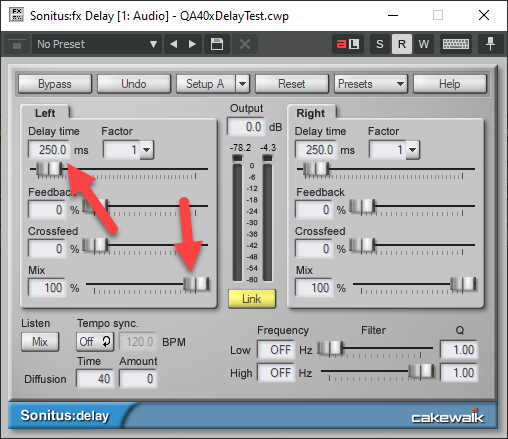
Running the QA40x plug-in yields the response below. The green trace is the output waveform, the red trace is the input waveform, and the blue trace is the cross-correlation between the input and output waveforms.
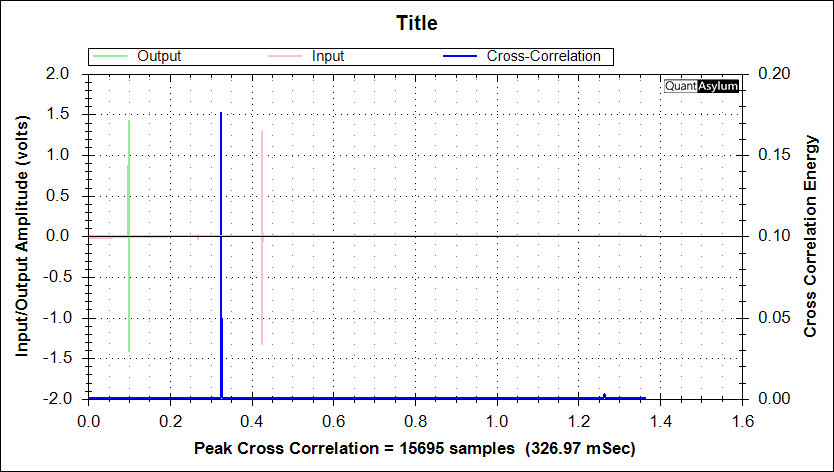
Let's zoom in at the output, which we specified to start at 100 mS. We can verify it's as expected in both placement and amplitude.
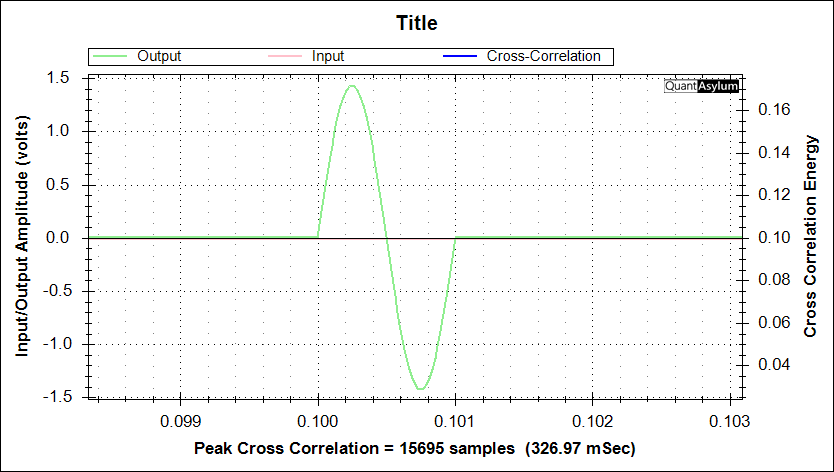
Next, let's look at the input. It also appears as expected. The delay is longer than 250 mS, but that is because of internal delays in Cakewalk for "live" audio.

Zooming in the blue trace shows the cross-correlation energy. The peak of the blue trace indicates the alignment needed to maximize the cross-correlation energy. In this case, the input needs to be delayed 15695 samples, or 326.97 mS, to best line up with the output. This is our path delay.
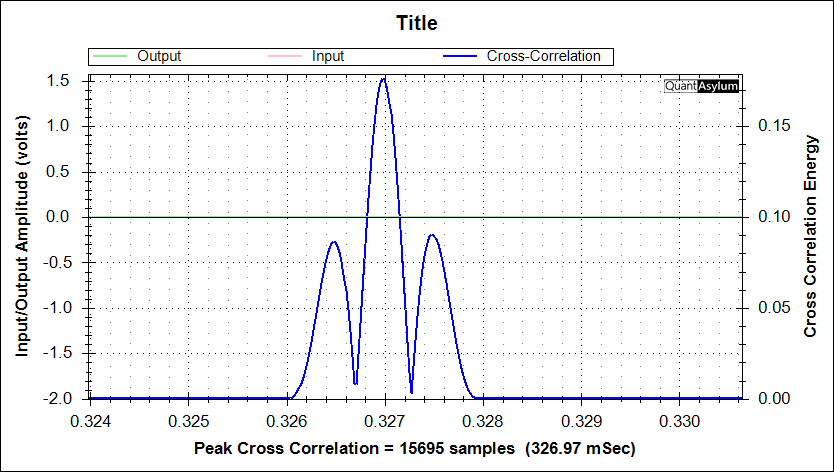
If we start the burst at 500 mS instead of 100 mS, we get a very similar plot and an identical path delay:
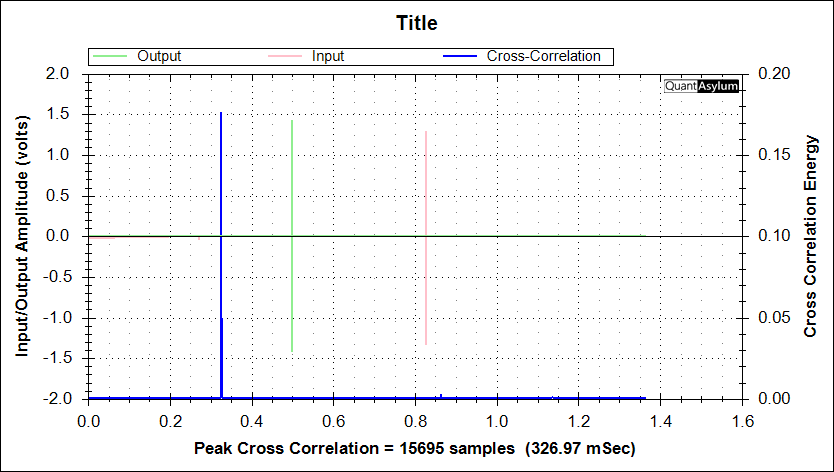
If our DUT has a noise gate that takes 50 mS to open, then we could set up a burst to start at 100 mS and also enable some noise to ensure the gate will open before the tone burst. In this case below, this is a lot of noise we're adding. Most products will have a noise gate threshold far below this:
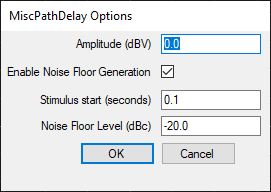
And the resulting plot is as shown:
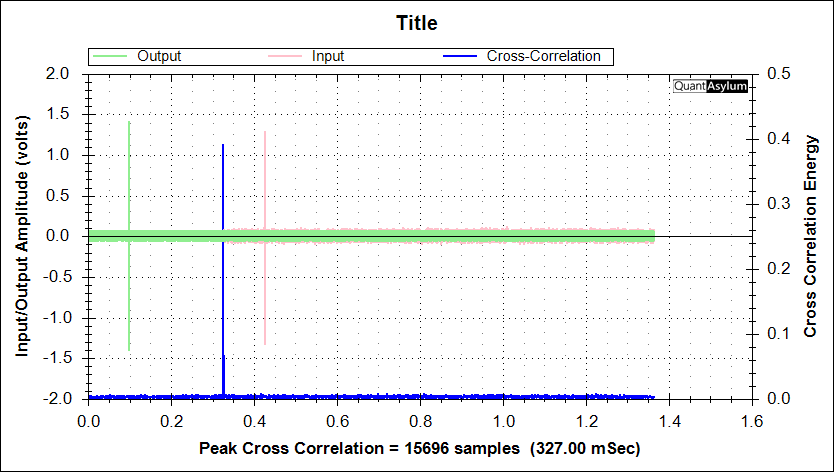
Note that the presence of noise has degraded things a bit, in that the path delay is measured at a 20 microseconds longer (a single sample). As with most measurements, make sure you are operating with sufficient signal for the task at hand (eg attenuator disabled if not needed) and also work to understand how noise will add uncertainty to your measurement.